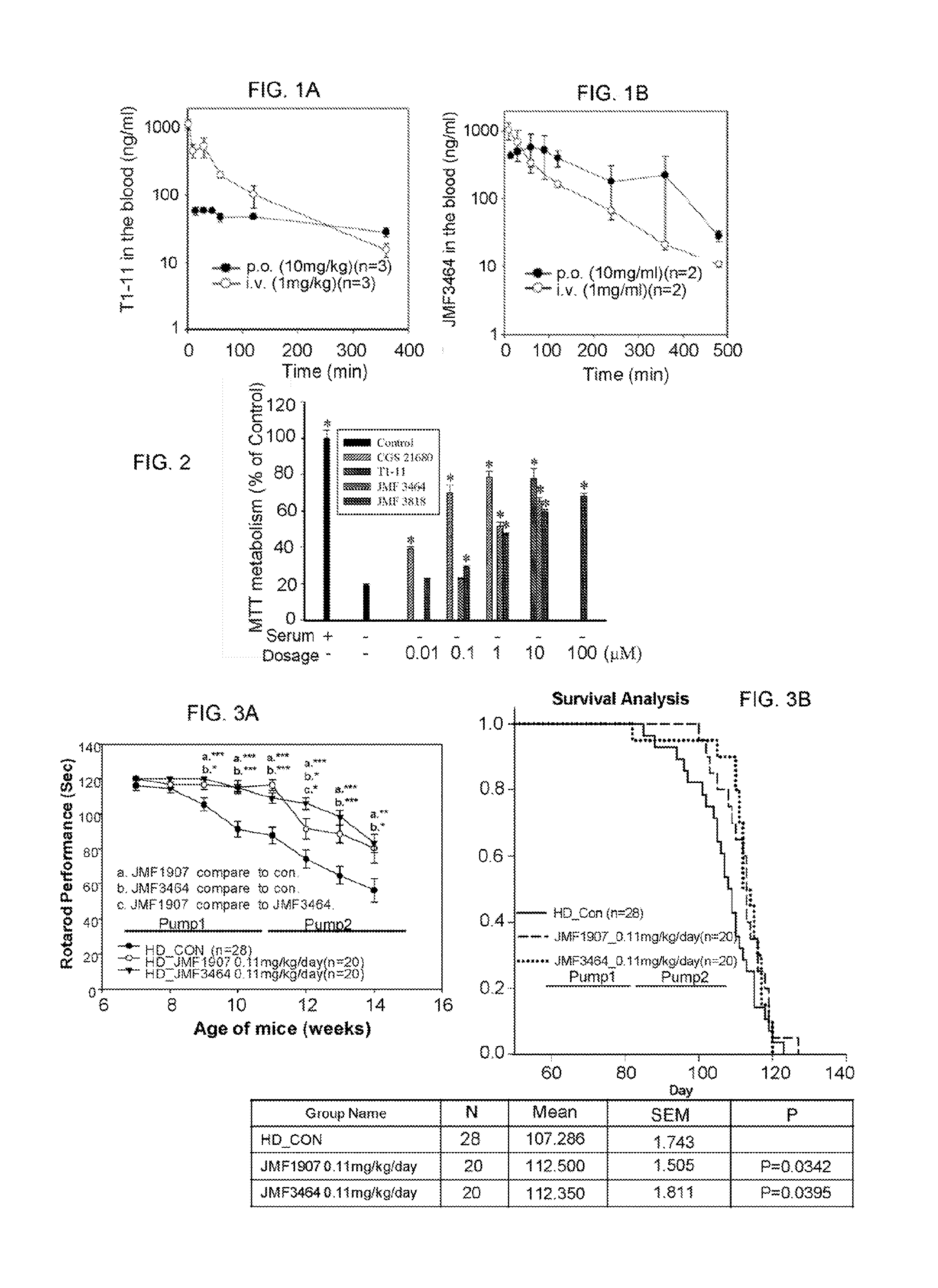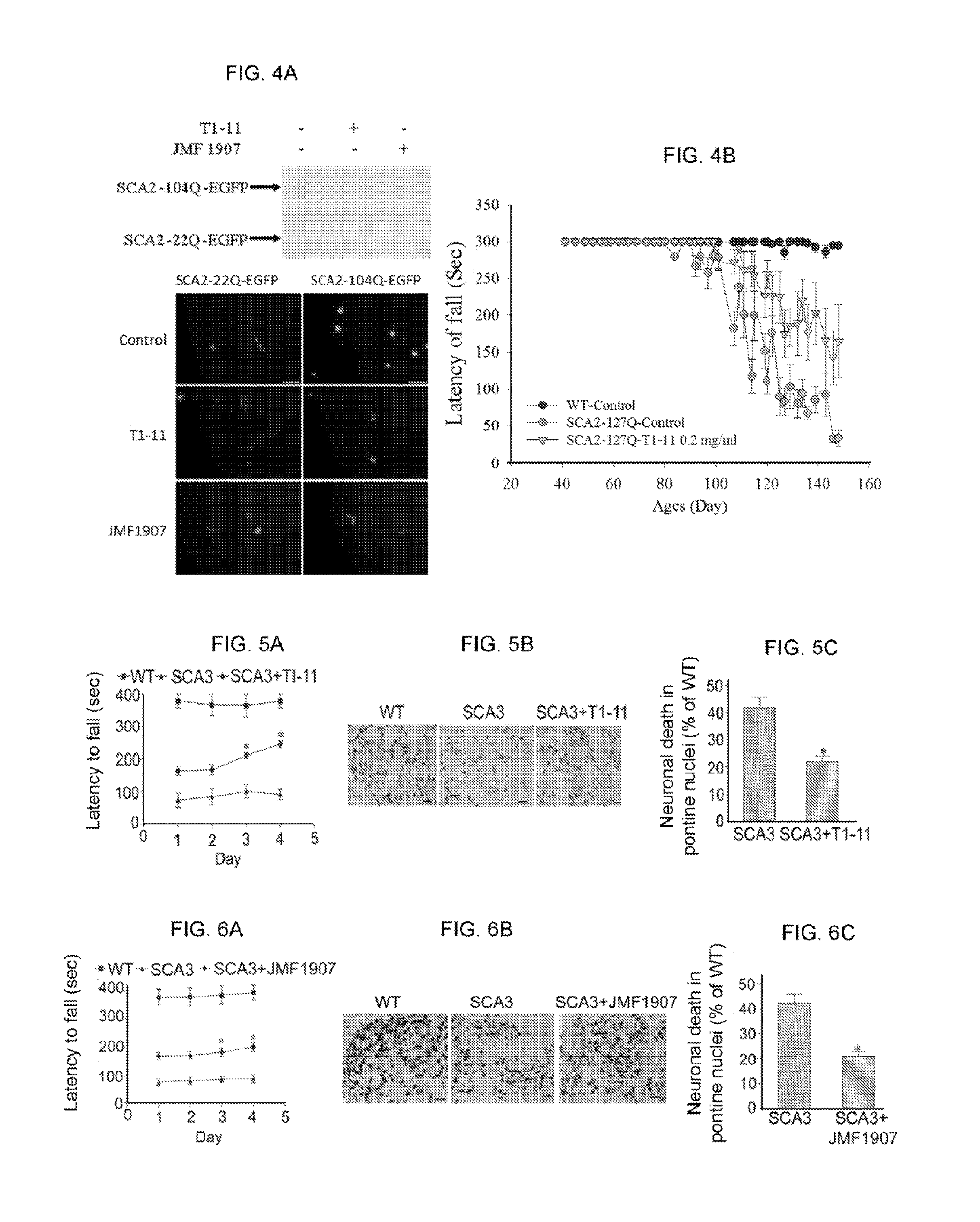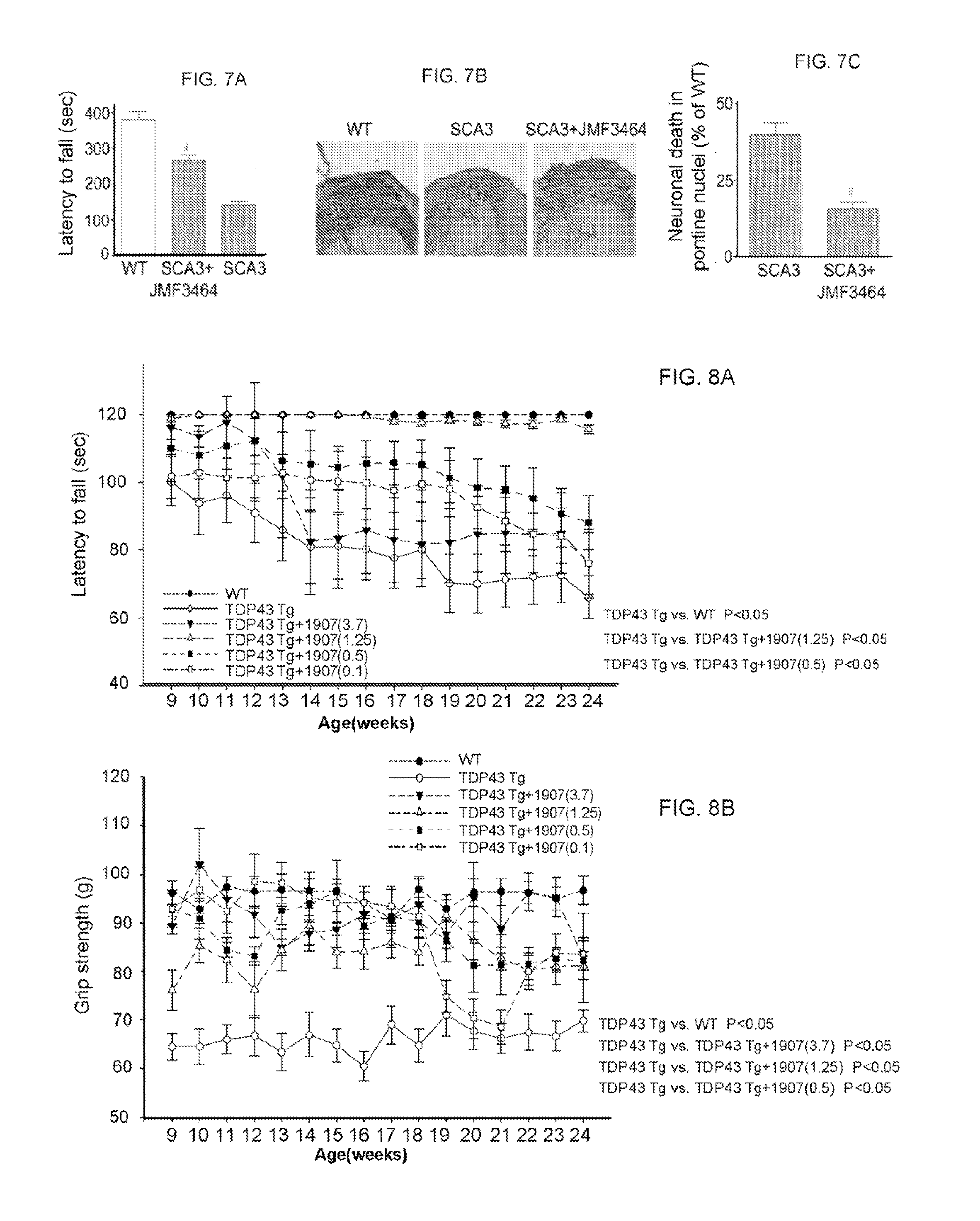Compounds for use in prevention and treatment of neurodegenerative diseases and pain
- Summary
- Abstract
- Description
- Claims
- Application Information
AI Technical Summary
Benefits of technology
Problems solved by technology
Method used
Image
Examples
example 1
[0061]All reagents and solvents were of reagents grade and were used without further purification unless otherwise specified. Tetrahydrofuran and diethyl ether were distilled from Na / benzophenone and CH2Cl2 was distilled from CaH2. All air or moisture sensitive experiments were performed under argon. All glasses were dried in an oven for more than 2 hours and used after cooling to room temperature in desiccators. Microwave reactions were conducted using a focused single mode microwave unit (CEM Discover). The machine consists of a continuously focused microwave power delivery system with operator-selectable power output.
[0062]Melting points were recorded on a Yanaco micro apparatus. Optical rotations were measured on digital polarimeter of Japan JASCO Co. DIP-1000. [α]D values are given in units of 10−1 deg cm2 g−1. Infrared (IR) spectra were recorded on Nicolet Magna 550-II. NMR spectra were obtained on Varian Unity Plus-400 (400 MHz) and chemical shifts (δ) were recorded in parts ...
example 2
Radioligand Binding Assays
[0088]Radioligand binding assays were performed by MDS Pharma Services Taiwan (Taipei, Taiwan) using standard binding protocols. For A2AR binding assays, membrane proteins collected from HEK293 cells overexpressing human A2AR were incubated in the reaction buffer [50 mM Tris-HCl (pH 7.4), 10 mM MgCl2, 1 mM EDTA, and 2 U / mL adenosine deaminase] containing 3H-CGS21680 (50 nM) for 90 min at 25° C. Nonspecific binding was assessed in the presence of 50 μM adenosine-5′-N-ethylcarboxamide. To measure the binding affinity of T-11 to the A3R, membrane proteins collected from Chinese hamster ovary (CHO)-K1 cells overexpressing human A3R were incubated with 3H-AB-MECA (0.5 nM) for 60 min at 25° C. in the reaction buffer containing 25 mM HEPES (pH 7.4), 5 mM MgC2, 1 mM CaCl, and 0.1% bovine serum albumin. Nonspecific binding was assessed in the presence of 1 μM IB-MECA (Tocris Bioscience, Ellisville, Mo., USA). Binding assays for adenosine transporters were conducted ...
example 3
Animals and Drug Administration
[0092]Male R6 / 2 mice (Mangiarini et al., 1996 Cell. 87:493-506) and littermate controls were originally obtained from Jackson Laboratories (Bar Harbor, Me., USA), and mated to female control mice (B6CBAFI / J). Offspring were identified by a polymerase chain reaction (PCR) genotyping technique of genomic DNA extracted from tail tissues using primers located in the transgene (5′-CCGCTCAGGTTCTGCTTTTA-3′; SEQ ID NO: 1, and 5′-GGCTGAGGAAGCTGAGGAG-3′; SEQ ID NO: 2) to ensure that the number of CAG repeats remained approximately 150. Animals were housed at the Institute of Biomedical Sciences Animal Care Facility under a 12 / 12-h light / dark cycle. Body weights of mice were recorded once daily. Animal experiments were performed under protocols approved by the Academia Sinica Institutional Animal Care and Utilization Committee, Taipei, Taiwan.
[0093]Rotarod Performance.
[0094]Motor coordination was assessed using a rotarod apparatus (UGO BASILE, Comerio, Italy) at ...
PUM
| Property | Measurement | Unit |
|---|---|---|
| Current | aaaaa | aaaaa |
| Current | aaaaa | aaaaa |
| Acidity | aaaaa | aaaaa |
Abstract
Description
Claims
Application Information
 Login to View More
Login to View More - R&D
- Intellectual Property
- Life Sciences
- Materials
- Tech Scout
- Unparalleled Data Quality
- Higher Quality Content
- 60% Fewer Hallucinations
Browse by: Latest US Patents, China's latest patents, Technical Efficacy Thesaurus, Application Domain, Technology Topic, Popular Technical Reports.
© 2025 PatSnap. All rights reserved.Legal|Privacy policy|Modern Slavery Act Transparency Statement|Sitemap|About US| Contact US: help@patsnap.com



